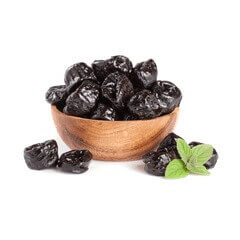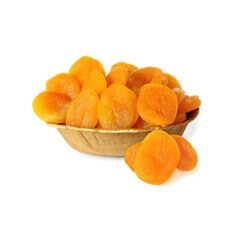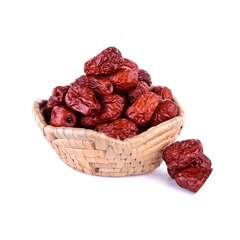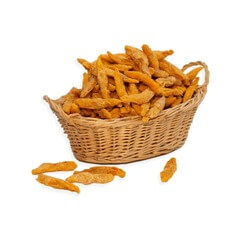The second most cultivated cereal in the world, just after wheat, rice is fascinating! And it’s rather good news because this cereal is packed with health benefits, even more, when it is complete or wild.
The Nutritional Characteristics of Rice
Rice is a cereal that is eaten boiled or steamed. Nutritionally speaking, it belongs to the family of starches because it mainly provides complex carbohydrates in the form of starch (30g per 100g). It is, therefore, a food that is energetic but also very satiating.
It contains little protein, a negligible quantity of lipids, and relatively little fibre when it is white, much more when it is wild, complete or red.
Rice is a good source of minerals and trace elements, especially manganese, phosphorus, magnesium, and selenium. In terms of vitamins, rice is a source of group B vitamins, in particular folate or B9.
There is a wide variety of rice whose nutritional values differ significantly, but overall, the more complete they are and, therefore, the less they are ripened, the more interesting they are from a nutritional point of view.
Calories, Proteins, Lipids, Carbohydrates and Nutritional Values of 100g of White Rice
- Nutrients
- Content per 100g
- Water
- 12.5g
- Proteins
- 7.04g
- Alcohol
- –
- Carbohydrates
- 78g
- – with sugar 0.16g
- – of which starch 77.8g
- – of which dietary fibre 1.05g
- Lipids
- 0.91g
- – of which saturates 0.2g
- – of which monounsaturated fatty acids 0.27g
- – of which polyunsaturated fatty acids 0.3g
What Are The Health Benefits Of White Rice?
A Digestible and Gluten-Free Cereal
White rice is a starch of choice for people with fragile, irritable intestines and prone to digestive discomfort.
It is indeed very rich in starch, which is transformed into butyric acid by the bacteria of the microbiota (or intestinal flora), improving intestinal permeability and reducing inflammation. This starch, therefore, contributes effectively to the good health of the colon. It is for this reason that the consumption of rice – even more when it is very cooked – is recommended in case of diarrhea.
In addition to this positive effect on the microbiota and the intestinal wall, white rice is one of the few kinds of cereal that are naturally gluten-free. Whether you are allergic, intolerant or just sensitive to gluten, rice can therefore be eaten without the risk of digestive disorders.
A Satiating and Good Food for the Line
We often hear that starches, and therefore rice, are foods that make you fat and are not recommended when you want to lose weight. This is a totally accepted idea since we now know that these foods provide complex carbohydrates, slowly digested and absorbed by the body, very satiating and moderately caloric.
Putting rice on the menu helps to promote the onset of a feeling of satiety and to avoid cravings and feelings of hunger between meals. For an even more satiating and interesting effect for the line, we recommend opting for wild, brown or black rice, which is very rich in fibre and with a very low glycemic index.
Brown, Wild, Black, Brown, Basmati, Thai Rice: The Different Varieties of Rice
There is a wide variety of rice, the colour, size, shape and taste of which can be very different.
First of all, it is necessary to differentiate the rice according to its treatment and refining:
- White rice, polished, which has been stripped of all its bran envelopes;
- Semi-complete rice, of which a small part of the envelope has been preserved, as well as their germ;
- Whole or brown rice, stripped of its outer shell but which retains its bran shell as well as its germ.
Remember that brown rice is nutritionally more interesting than white rice: it provides more fibre, vitamins and minerals and lowers glycemic index. However, it takes longer to cook.
Then, among the many species of rice that exist throughout the world, here are the most marketed and consumed.
- Basmati rice: it is a long-grain rice originating from India and Pakistan. “Basmati” means “fragrant” in Hindi. It is distinguished by its firm texture, which does not stick when cooked. Basmati rice can be white or brown.
- Round or arborio rice: this rice comes from Italy, where it is widely used for the preparation of risotto. Its high starch content makes it melt and sticky. It can also be used to make desserts, such as rice pudding or rice cake.
- Thai or jasmine rice: originally from Thailand, it is rice with long, fine and white grains, very fragrant. It differs from basmati rice in a more sticky and less dry texture.
- Black rice: this variety of rice, originating from China, has a very fine taste, similar to that of hazelnuts. With several envelopes, it requires a long cooking time of 30 to 45 minutes. There are several varieties, with more or less long grains and a more or less sticky texture.
- Red rice: red rice is brown rice originating from China, but which is also found in Africa, Italy and the Camargue. It is a natural mutation that gives its sound film the colour red.
- Wild rice: although it is called “rice,” wild rice does not belong to the same botanical species as the others. This cereal belongs to the Poaceae family, just like corn and oats. It is lower in carbohydrates and lower in calories than rice.
- Camargue rice: this French rice cultivated since the Middle Ages is protected by an IGP (Protected Geographical Indication) which provides guarantees on the quality of production, the traceability of rice as well as varietal selection techniques to the consumer. It can be white, full or red, round, long or very long.
Visit the ADNOOR website for the best golden Sella basmati rice, long-grain rice, brown rice, Super Kernel Basmati Rice, white rice, nuts, seeds, and dried fruits. We take pride in saying that we are the best rice suppliers in Canada and have been the importers, exporters, wholesalers, distributors, and co-packers of various nuts and grains in Canada for the last 25 years. We aim to provide our customers with quality products so they keep trusting us. So without wasting time, visit our website and order what you need.







